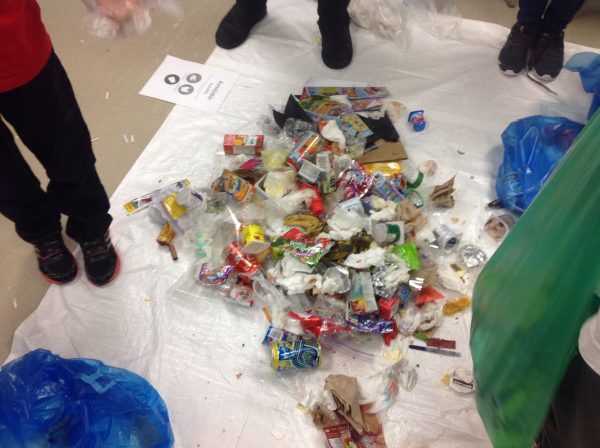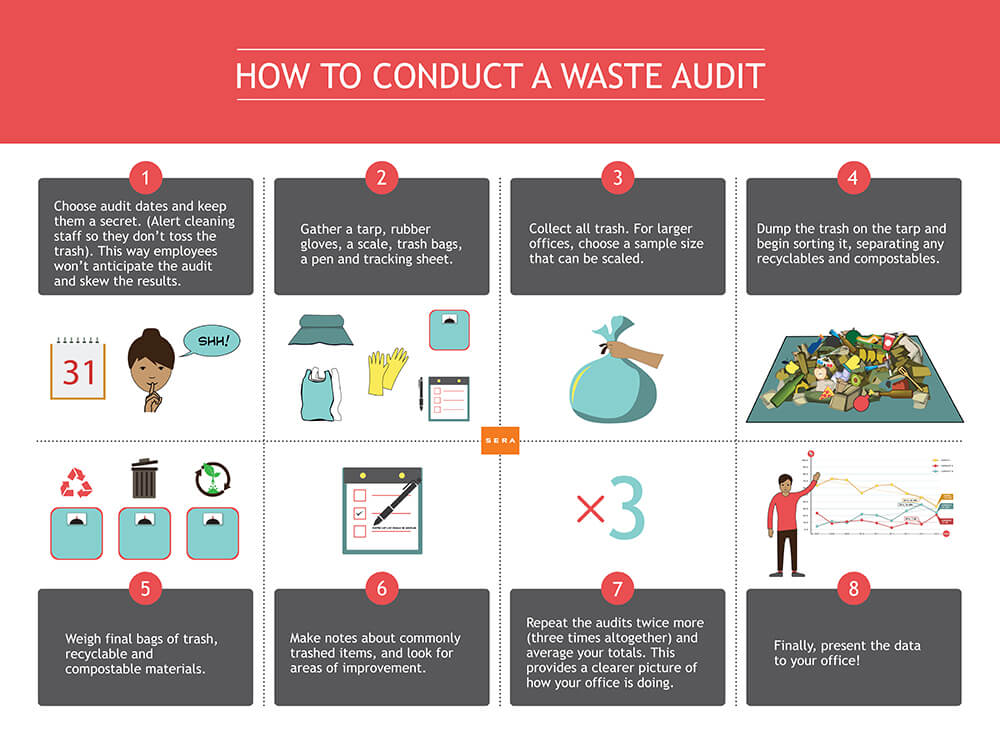- Version March 2021
- Download 213
- File Size 756.60 KB
- File Count 1
- Create Date May 15, 2020
- Last Updated December 10, 2021
How to conduct a waste audit in schools or early learning centres
CLICK the GET BUTTON to download the full document.
Why do a waste audit?
Conducting a visual waste audit helps to work out how much waste is produced, and what waste types make up the waste stream leaving the school, ending up in landfill. It provides the baseline data against which all waste minimisation progress can be measured in the future.
Audits are also used to collect information about other resources like electricity and water use.

waste audit: pile of garbage on tarp
Using visual waste audits to promote waste education goals
Collecting information about your current waste procedures will help to identify the types and amount of waste material and food waste sent to landfill over the number of weeks your school operates in one year (e.g. 40 weeks) and highlight potential opportunities for recovering/recycling resources and minimising the waste stream leaving the school or early learning centre going to landfill.
A visual waste audit is the first step to reducing waste at your centre or school. It involves a visual inspection of external waste and recycling bins to determine how full they are when they are put out for collection. This activity can be run in the morning, using waste collected and stored from the previous day, or in the afternoon using waste collected from the start of the day. Try and select a calm day, wind can result in waste littering the school grounds.
This waste audit should be done more than once to average waste volumes and should be repeated at least once a year to demonstrate your ongoing progress in minimising your waste. Something to celebrate!
This task can be done manually as described in this guide; however, check your local council’s website for an online waste calculator.
The waste audit process - how to do a waste audit in schools and early learning centres

The 8 step waste audit process (infographic by Sera Design): A visual waste audit is a process designed to analyse the amount and types of waste generated by your centre or school. It provides the baseline data against which all waste minimisation progress can be measured in the future.
Waste Audit Templates for Schools
The appendix contains visual waste audit worksheet data tables for:
- general waste bins
- mixed or commingled or recyclable bins
- paper and/or cardboard recyclable bins
- garden waste or food waste
- other recoverable resources (e.g. Containers for Change, soft plastics, e-waste, batteries, print cartridges)
CLICK the GET BUTTON to download the full document.
This document is part of the suite of free waste education resources at www.wasteeducation-qld.org